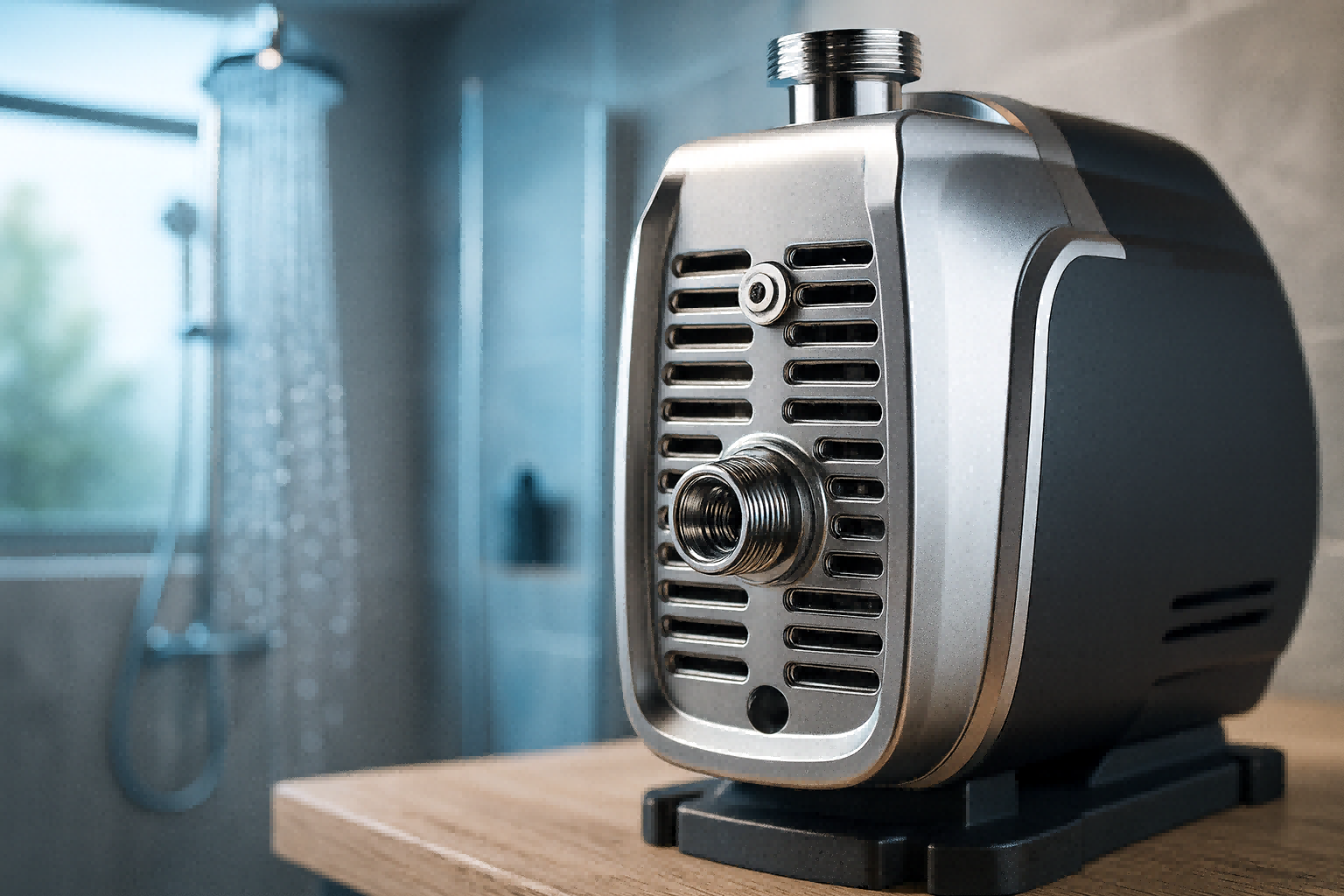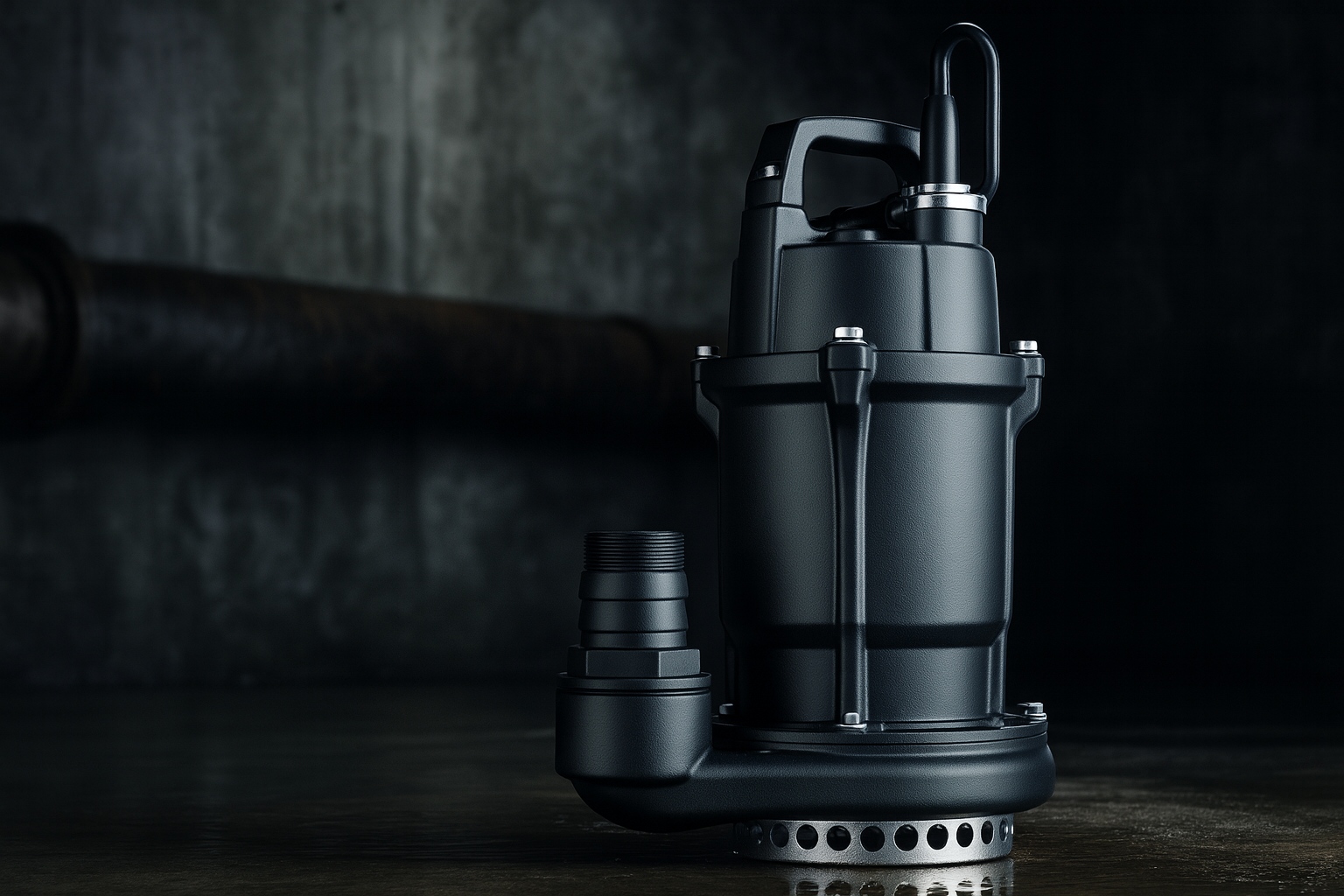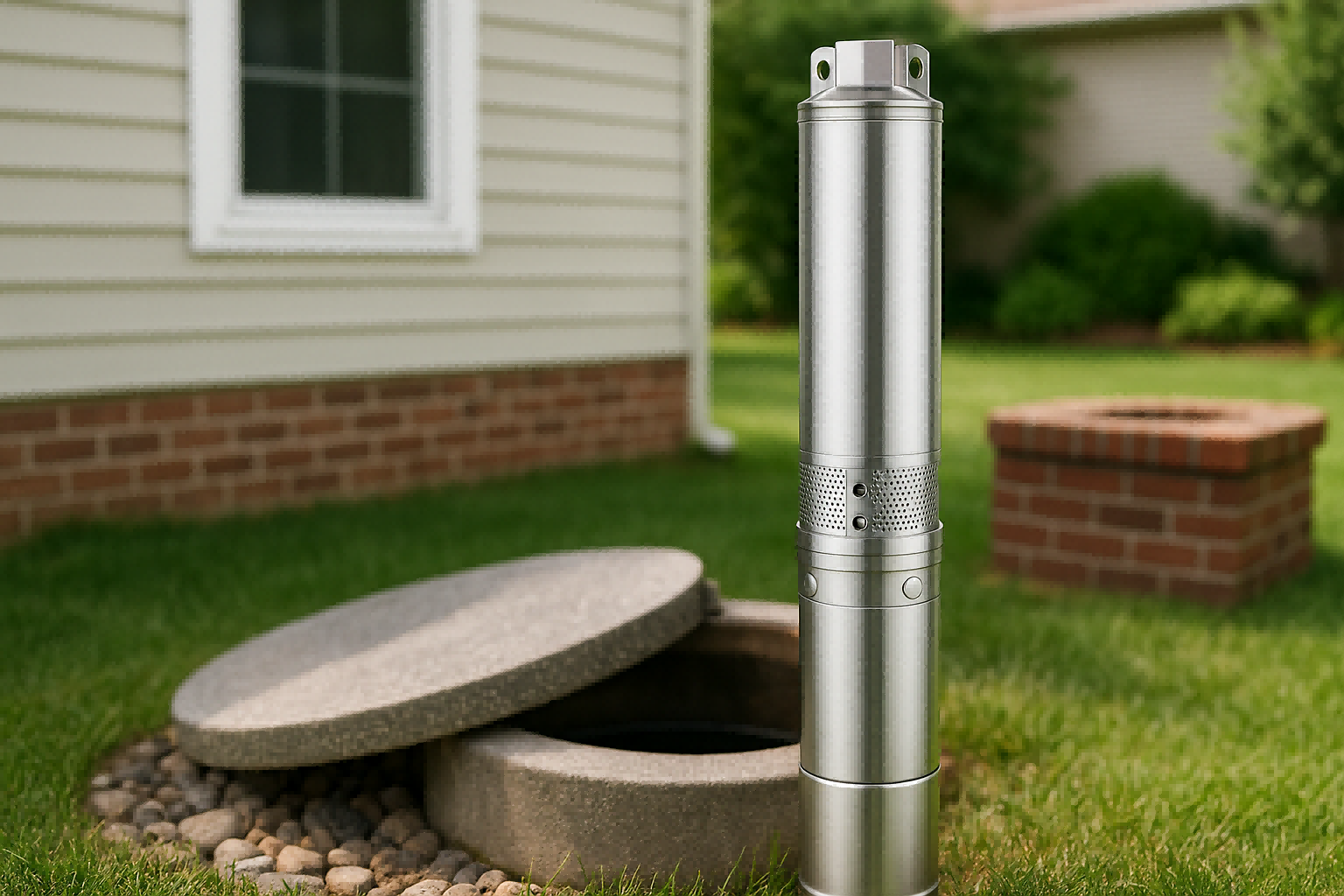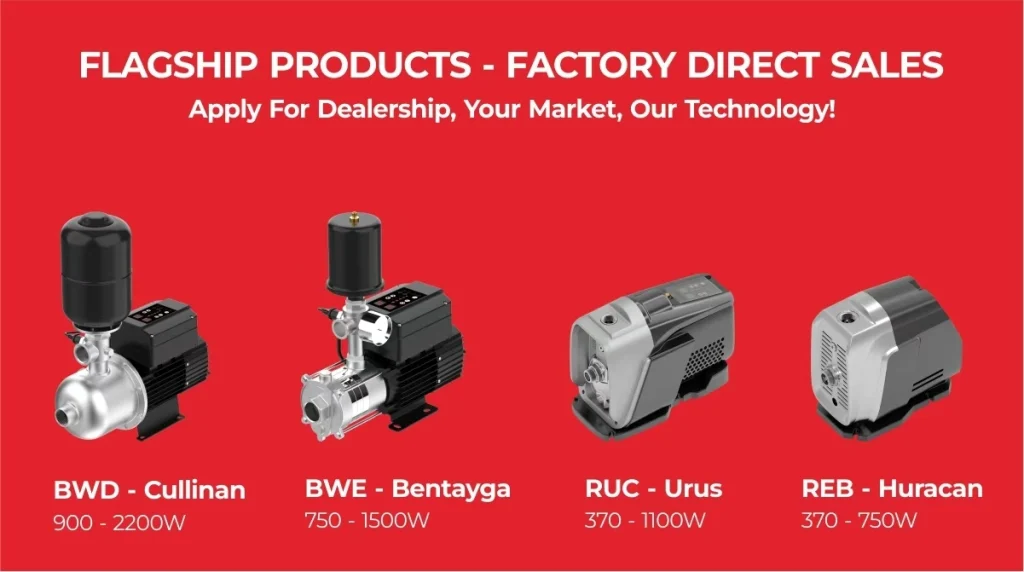Inconsistent water pressure can be a daily frustration.
This disrupts everything from showers to appliance efficiency.
The right pump ensures a steady, reliable water supply for your home or business.
Choosing the right pressure pump involves matching the pump's flow rate, pressure, and type to your water tank size, household demand, and plumbing system's specific requirements for efficient operation.

Selecting the ideal pump might seem complex.
Many technical specifications and types can be confusing.
This guide will break down the essential factors step-by-step.
We will help you understand your needs and compare pump features confidently.
You will learn to select a pump that delivers consistent pressure and long-term reliability.
Let’s explore how to make the best choice for your water system.
Understanding Your Water Tank System and Needs
Are you struggling to figure out your system's exact needs?
This confusion can lead to buying a pump that is too weak or too powerful.
An incorrect choice wastes money and energy.
First, assess your water tank's capacity, your daily water demand, and the required pressure in PSI.
Also consider the vertical lift and pipe dimensions to create a full system profile.
To choose the right pump, you must first become an expert on your own water system.
This process involves more than just a quick guess.
It requires a detailed look at several interconnected factors that dictate pump performance.
Ignoring one aspect can compromise the entire system's efficiency.
Key Assessment Factors
Before browsing pump models, gather this critical data:
- Water Tank Capacity: Know your tank's size in gallons or liters.
A larger tank often pairs with a higher-capacity pump to manage the volume, while a smaller pump is sufficient for a smaller tank. - Water Demand: Calculate your typical and peak water usage.
Consider how many people use the system and how many high-consumption appliances might run simultaneously.
A pump must meet peak demand without a drop in pressure. - Pressure Requirements: Determine your desired water pressure, usually between 40 and 60 PSI for most homes.
Low pressure is frustrating, but excessively high pressure can damage your pipes and fixtures over time. - Vertical Lift (Head): Measure the vertical distance from the pump to the highest water outlet (e.g., a top-floor shower).
The pump's power must be sufficient to push water up this height, overcoming gravity.
System and Environmental Considerations
Your physical setup also plays a significant role.
Understanding these elements prevents performance bottlenecks and ensures compatibility.
| Factor | Description | Why It Matters |
|---|---|---|
| Piping System | The diameter and total length of your pipes. | Smaller pipes and longer runs create more friction, requiring a pump with a higher pressure output to compensate for the loss. |
| Water Source | Whether your water comes from a well, municipal supply, or rainwater harvesting. | Well water may need submersible pumps that handle sediment, while municipal supplies might just need a booster pump. |
| Budget | Your pre-determined spending limit. | Pumps vary widely in price based on technology, power, and brand. A clear budget helps narrow your focus to realistic options. |
By thoroughly understanding these elements, you create a detailed blueprint of your needs.
This data-driven approach removes guesswork.
It empowers you to select a pump that is not just adequate, but perfectly optimized for your specific situation.
Types of Pressure Pumps for Water Tanks
Feeling overwhelmed by the different pump types available?
Centrifugal, jet, submersible—the terms can be confusing.
Choosing the wrong one means poor performance and wasted investment.
The most common types are centrifugal for general use, submersible for deep wells, jet pumps for compact spaces, and booster pumps to increase existing pressure.
Your water source and pressure needs determine the best type.
Once you understand your system's needs, the next step is to match them with the right type of pump technology.
Each design has unique strengths suited for different applications.
Choosing the correct category is just as important as getting the specifications right.
An inappropriate pump type, even with the right power, will not operate efficiently.
Let’s examine the most common options to see which one fits your requirements.
Surface Pumps
These pumps are installed above ground and pull water from the source.
They are common for residential systems drawing from shallow wells or water tanks.
-
Centrifugal Pumps: These are the workhorses of the pump world.
They use an impeller to spin water and force it out through the outlet.
They are excellent for moving large volumes of water efficiently at moderate pressures.
This makes them a popular and cost-effective choice for many standard home water tank systems. -
Jet Pumps: Jet pumps work by creating a vacuum to suck water up from the source.
They are often more compact than centrifugal pumps, making them ideal for installations with limited space.
While effective, they can be less energy-efficient, especially when higher pressures are required.
Specialized Pump Types
Some situations call for pumps with specific designs.
These are engineered to solve particular challenges that surface pumps cannot.
-
Submersible Pumps: As the name implies, these pumps are placed directly inside the water tank or well.
This design is highly efficient because it pushes water instead of pulling it, requiring less energy to move water over long vertical distances.
They are known for being very quiet and reliable.
This makes them the standard for deep wells and large underground tanks. -
Booster Pumps: A booster pump is not a primary pump.
Instead, it is installed in a pipeline to increase the pressure from an existing, insufficient source.
If your municipal water pressure is low, a booster pump is the perfect solution to bring it up to a usable level without replacing the whole system. -
Diaphragm Pumps: These pumps use a flexible diaphragm that moves back and forth to push fluid.
They are excellent at self-priming and can handle liquids that contain small solids or debris.
Their design provides a smooth, pulsation-free flow, which is beneficial in specific applications like rainwater harvesting systems.
Key Specifications to Consider
Are technical terms like GPM, PSI, and Head Power confusing you?
Misinterpreting these specifications can lead to buying a pump that fails to perform.
This mistake results in weak showers and inefficient appliances.
Focus on Flow Rate (GPM/LPM) for volume, Pressure Rating (PSI) for force, and Head (vertical lift) for height.
Match these core specs to your calculated system needs for optimal performance.
After selecting the right pump type, you must dive into the specific performance metrics.
These numbers on the specification sheet are not just jargon.
They are the precise language that tells you exactly what a pump can and cannot do.
Understanding them is crucial for making an informed choice that guarantees satisfaction.
Let’s break down the most important specifications and what they mean for you.
Core Performance Metrics
These three values form the foundation of a pump's capability.
You must ensure they align with the needs you identified earlier.
-
Flow Rate (GPM or LPM): This tells you the volume of water the pump can move in one minute (Gallons Per Minute or Liters Per Minute).
Your required flow rate should be based on your peak household demand.
For example, if a shower uses 2.5 GPM and a faucet uses 1.5 GPM, you need at least 4 GPM to run both simultaneously without a loss of performance. -
Pressure Rating (PSI or bar): This indicates the maximum force the pump can generate.
It must be high enough to overcome friction in your pipes and deliver water at your desired pressure.
A typical home requires 40-60 PSI for comfortable use.
Choosing a pump with an adjustable pressure range provides flexibility. -
Head (Vertical Lift): This is the maximum vertical distance in feet or meters that the pump can move water.
It's essential to choose a pump with a max head rating that is significantly higher than your system's actual vertical lift to ensure it isn't overworking.
Power and Durability Specifications
Beyond performance, these specs relate to the pump’s power source, construction, and longevity.
| Specification | What It Means | Why It Is Important |
|---|---|---|
| Horsepower (HP) | The power output of the pump's motor. | Higher HP generally means higher flow rates and pressure capabilities. It's a general indicator of the pump's overall strength. |
| Power Source | Whether the pump is electric (AC/DC) or fuel-powered. | Electric pumps are standard for residential use. Advanced pumps accept a wide voltage range (e.g., 165V-260V) for stability in areas with poor power grids. |
| Materials | The materials used for the pump housing and internal components. | Look for corrosion-resistant materials like AISI304 stainless steel and high-grade engineered plastics to ensure a long service life, especially with treated or hard water. |
Modern pumps often use advanced motor technology, like Permanent Magnet Synchronous Motors (PMSM) paired with a Variable Frequency Drive (VFD).
This combination not only provides constant, stable pressure but is also ultra-quiet and significantly more energy-efficient than traditional motors.
Choosing the Right Pump: A Step-by-Step Guide
Not sure how to put all this information together to make a final decision?
This uncertainty can cause you to delay your purchase or choose poorly.
A clear process eliminates doubt and ensures a confident choice.
Follow a simple, four-step process: Assess your needs, select the right pump type based on those needs, compare key specifications of different models, and then consider installation and long-term maintenance.
You have learned about your system's needs, pump types, and key specifications.
Now it's time to bring it all together into a practical, actionable plan.
This structured approach simplifies the final selection process.
By following these steps, you can methodically narrow down your options.
You will arrive at the one pump that is the perfect fit for your water tank system.
This ensures you invest in a solution that provides reliable performance for years to come.
Step 1: Complete Your System Assessment
This is the foundation of your decision.
Do not skip this part.
- Document Your Needs: Write down your tank capacity, calculated peak water demand (GPM/LPM), desired pressure (PSI), and the total vertical lift (head).
- Analyze Your Plumbing: Note the diameter and approximate length of your main water lines.
Step 2: Select the Appropriate Pump Type
With your assessment data in hand, you can now choose the right category of pump.
- For a deep well: A submersible pump is the best choice.
- For a water tank serving a house: A centrifugal pump is often the most cost-effective and efficient option.
- For boosting low municipal pressure: A dedicated booster pump is what you need.
- For a compact, small-scale setup: A jet pump might be suitable.
Step 3: Compare Specifications and Features
Now, compare specific models within your chosen pump type.
Look beyond the basic numbers and consider advanced features that add value, reliability, and efficiency.
| Feature to Compare | Standard Pump | Advanced Pump |
|---|---|---|
| Control System | Fixed speed, runs at 100% power | Variable Frequency Drive (VFD) for constant pressure and energy savings. |
| Motor Technology | Standard induction motor | High-efficiency Permanent Magnet Synchronous Motor (PMSM) for quiet operation and longer life. |
| Electronic Protection | Basic fuse or circuit breaker | A comprehensive suite of protections (dry run, overheating, voltage fluctuations, frost). |
| Electronics Housing | Vented, open to air and moisture | Fully sealed (potted) electronics board (e.g., IP67 rated) to prevent failure from dust and humidity. |
Step 4: Finalize and Install
Once you have selected a model, the final steps are purchase and installation.
- Read Reviews: Check user and professional reviews for real-world feedback on reliability and performance.
- Consider Professional Installation: Unless you are highly experienced in plumbing and electrical work, hiring a professional is a wise investment.
A qualified installer will ensure the pump is correctly sized, securely installed, and properly integrated with your system for optimal, safe operation.
Maintenance and Safety Considerations
Think your job is done after the pump is installed?
Neglecting maintenance leads to unexpected breakdowns and costly repairs.
Ignoring safety protocols can result in serious injury or property damage.
Ensure longevity through regular inspections, filter cleaning, and pressure monitoring.
Always prioritize safety by disconnecting power before maintenance and ensuring the system is properly grounded and leak-free.
Choosing and installing the right pressure pump is a major step.
However, proper maintenance and a commitment to safety are what will guarantee its long-term performance and reliability.
A pump is a powerful piece of machinery that combines water and electricity.
Therefore, treating it with respect is non-negotiable.
A proactive approach to care will extend your pump's lifespan significantly.
It will also provide peace of mind and prevent the headache of a system failure.
Routine Maintenance for Longevity
Regular upkeep is simple but highly effective.
A few checks every few months can make a world of difference.
- Visual Inspections: Regularly look over the pump and its connections.
Check for any signs of leaks, cracks, or corrosion on the housing and fittings.
Address small drips before they become big problems. - Filter Cleaning: Most pump systems have an intake filter or strainer.
This component prevents debris from entering and damaging the pump.
Clean or replace it according to the manufacturer's schedule to maintain strong water flow and protect the pump's internal components. - Monitor Performance: Pay attention to how your pump sounds and operates.
Unusual noises, excessive vibration, or frequent cycling can be early warning signs of a problem.
Also, keep an eye on your pressure gauge to ensure it’s holding steady at the set pressure.
Critical Safety Protocols
Safety must always be your top priority when working with any water pump system.
Follow these rules without exception.
| Safety Rule | Action Required | Reason |
|---|---|---|
| Disconnect Power | Always turn off the circuit breaker and unplug the pump before any inspection or maintenance. | This is the most crucial step to prevent the risk of severe electrical shock. |
| Respect Pressure | Never operate the pump above its maximum pressure rating or the rating of your pipes. | Over-pressurizing the system can cause pipes or fittings to burst, leading to major water damage. |
| Ensure Proper Grounding | Verify that the pump's electrical system is correctly grounded as per local codes. | A proper ground provides a safe path for stray electrical current, protecting against shock. |
| Check for Leaks | Make leak detection a regular part of your routine. | Water and electricity are a dangerous combination. Even small leaks near the motor or electrical housing must be fixed immediately. |
Many modern pumps have built-in safety features, such as automatic shutdown for dry running or overheating.
While these are incredibly valuable, they are not a substitute for diligent maintenance and safe practices.
Conclusion
Choosing the right pressure pump ensures consistent water flow, energy efficiency, and system longevity.
By following this guide, you can confidently select the perfect pump for your specific needs.
FAQs
What size water booster pump do I need?
Your pump size depends on flow rate and pressure needs. Calculate the fixtures you'll use at once and add their GPM ratings for the required flow rate.
How do I choose a water pump for my house?
Assess your home's water demand, the distance water must travel, and your desired pressure. Match these needs with a pump's flow rate, head, and PSI specifications.
What is a good PSI for a house water pump?
A good pressure range for most homes is between 40 and 60 PSI. This provides strong flow for showers and appliances without stressing your plumbing.
Can a booster pump be too powerful?
Yes. A pump that is too powerful can create excessively high pressure (over 80 PSI), potentially damaging pipes, fixtures, and appliances. It also wastes energy.
How long should a water booster pump last?
A well-maintained booster pump can last from 8 to 15 years. Longevity depends on the quality of the pump, usage patterns, and the consistency of routine maintenance.
Do I need a pressure tank with a booster pump?
While some modern VFD pumps don't require one, a pressure tank is highly recommended. It reduces pump cycling, saves energy, and prevents water hammer, extending the pump's life.
What is the difference between a water pump and a booster pump?
A water pump moves water from a source (like a well), while a booster pump increases the pressure of water that is already flowing in a system.








